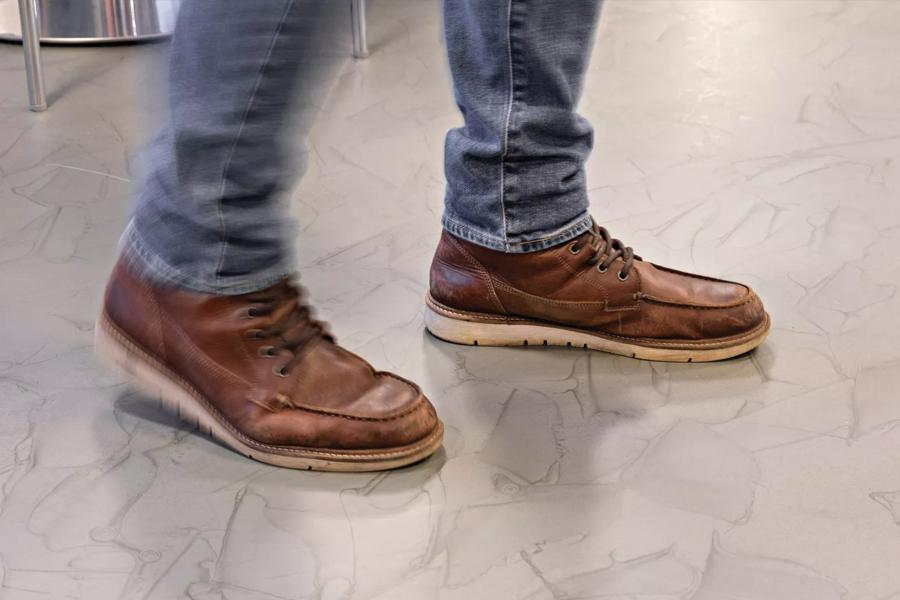Where sensitive equipment is housed, floors need to be static-electric safe. Berk Aydin looks at the benefits and solutions of anti-static flooring.
AS organisations face increasing pressure to maintain operational and safety standards despite ever-tighter financial constraints, flooring choices in buildings in their care carry extra significance. Where sensitive equipment is housed, floors need to be static-electric safe.
Controlling static electric load often begins with understanding how an electrostatic charge occurs in the first place and which type of flooring is required to fulfil the needs of where it’s being placed.
There are two main types of anti-static flooring systems: electrostatic discharge (ESD) and electrically conductive flooring (ECF).
Often used in rooms where a higher level of static electric control is necessary, such as computer rooms, X-ray suits, operating theatres or electronic manufacturing facilities, ESD flooring protects electronic equipment from damage. This type of flooring is used in conjunction with other measures, such as humidity controllers and ESD compatible clothing and footwear.
Whereas ECF flooring is suitable for rooms where sensitive electronic equipment is used, this includes automotive, electronics and pharmaceutical manufacturing, storage facilities and warehouses.
As the importance of maintaining operational safety standards continues to be a main focus for organisations, installing the correct anti-static floor is a necessity to ensure the risks are removed, as when it’s done wrong, the consequences could be catastrophic.
What are the risks?
In industries where electronic components or flammable chemicals are involved, static electricity can result in significant damage, injury and financial loss. All active electronic components and equipment, such as microchips, integrated circuits and machinery are sensitive to electrostatic discharges.
If ESD protection and control isn’t taken into consideration, it can lead to several different consequences, for example, devices could be damaged or completely destroyed in places where there are electrostatic sensitive devices. Or, in a worst-case scenario, fire and explosions can happen where there are explosive atmospheres and substances.
How can my floor discharge the static electricity?
Certain flooring systems contain special fillers and additives that collect the static electric load. Systems comprising an earthing kit will discharge the load to earthing points, some of which are capable of conducting about 300sq m to earth. This will ensure effective ESD coverage across large areas of at-risk workspace.
To reduce the risk of electrostatic damage to sensitive equipment, a floor needs to have low electrical resistance so any static electricity generated is able to be discharged before it has a chance to build up.
What’s the installation process?
Owing to the requirements of anti-static flooring, it’s always installed by experienced professionals. This is to ensure it’s of the utmost smoothness, strength and anti-static properties so it performs correctly and safeguards a company’s hi-tech equipment.
How do you make your flooring safe?
There’s a wide range of anti-static flooring products available, highlighting the need to specify an ESD or ECF system that meets the precise design needs of a particular application. In the first instance, whatever the selected solution, it should comply with the DIN EN 1081 requirement, namely Resistance to Ground RG < 1 x 108 ohms. In addition to this, it should also meet ATEX 137 requirements.
A typical ESD floorcovering fulfils System Test < 1 x 109 ohms and Walking Test (BVG) < 100 Volts in accordance with IEC 613450-4-5, as well as the standards and norms previously mentioned. Whereas a typical ECF floorcovering fulfils Resistance to Ground RG < 1 x 109 ohms in accordance with IEC 61340-4-1, and DIN EN 1081 and ATEX 137, too.
The benefits of anti-static flooring
Often used in locations where failure isn’t an option, when installing anti-static flooring, it’s important to engage a flooring specialist such as Sika to ensure the correct and most effective type is selected. As a global market leader in providing advanced flooring technology, Sika will deliver a high-performance solution tailormade for each individual customer and deliver benefits such as reliable long-term conductivity and high mechanical resistance.
www.sika.com


